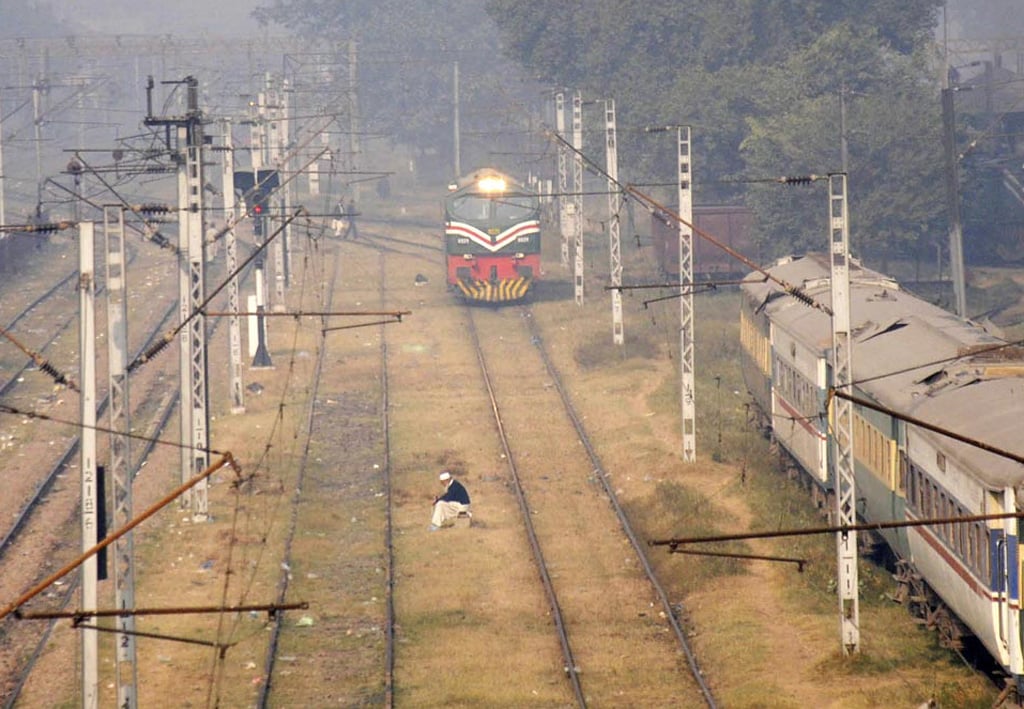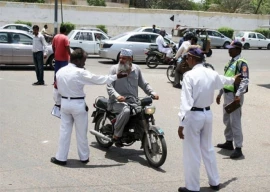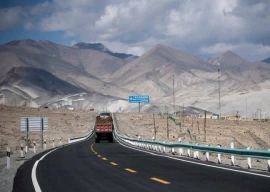
On the third and last day of the South Asian Cities Conference here at Frere Hall on Sunday, they discussed different dimensions of the Bus Rapid System (BRT) – in which buses are given a reserved strip in the middle of a road. They called it a practical, efficient, affordable mobility solution for urban transportation problems.
Researcher Murtaza Haider said that that BRT is more favourable compared to trains in Pakistan because of its law and order conditions and violence. In 2011, more than 35 terrorist attacks were made on the Pakistan Railways infrastructure. In 2012 the attacks were no less than 30 and in the previous year there were 18 attacks.
“If someone throws a pattakha at the tracks, the whole system will be affected while the bus system is more resilient and can stand such interruptions because you can shift the load to another road,” he said. This is true for Pakistan because the violence is unpredictable, random and has affected the transit system. In December 2007, 55 railway engines and over 300 cars were destroyed in just one night.
“There was a time not very long ago when Karachi was introducing a magnetic levitated urban transport system and that really was a shock to me,” said Haider, adding that he wrote in a newspaper at that time explaining that it was a bad choice. It is not entirely tested and unaffordable for cities like Karachi, among other reasons.
BRT provides you the mobility and affordability and it can reach 40 to 50 kilometres per hour and can take 10,000 to 15,000 people per hour in every direction. “You can implement them in stages,” he said. The metro system, whether elevated or underground, unless and until its structure is not completed, can’t be used.
But BRT can be built in stages and can be run on even one corridor before the entire structure is completed. He suggested explicit subsidies in the BRT fare structure in Pakistan to make it a success given that when violence breaks out, men burn buses over a dispute with the conductor over fares. “The transit fare should be structured to allow the operator to make a profit otherwise there is no incentive and you will have these violent clashes,” he said.
A subsidy would also make it a success as low-income people would be able to afford it. He cited the example of the Ahmedabad BRT which was not as successful because of a lack of a subsidy.
But, he concluded by saying that political will was of essence. “Where there was political will in the world BRT systems were started and run successfully.”
Researcher Dr Imran Muhammad said that in order for BRT to be a success, you need not just political will but the involvement of people to use the potential of local industry, local institutions along with local expertise. He presented the pioneering success story of Curitiba, Brazil whose BRT system has been running for over four decades. “They [the Brazilians] were running sustainable transportation when the rest of the world started talking about the concept,” he said.
In Curitiba, they have kept the information system very simple to understand. “I spent my time in Curitiba very easily despite the language barrier, just because of the simplicity in their information system,” he said. The buses are not time-bound and thus you can find a bus any time you go to the station. They didn’t even use a smart card system. And the BRT is so successful that residents keep their cars for recreation. Out of 1,000 people 700 have their own cars. “In Curitiba they involved the general public and now they own it and feel proud of their BRT system. They went to their automobile industry and asked them to make buses for them. They went to their local steel and glass industry and asked to construct the stations for BRT.”
Senior transport specialist at the Asian Development Bank, Lloyd Wright, talked about bank investment in the sustainable transportation sector. By 2050 he said it would be 275 trillion US dollars in the region out of which $60 trillion will be in infrastructure, $160 trillion in vehicles and $52 trillion in fuel. Wright also stressed involving local investors for the projects and generating money from commercial development.
Speaking on the safety and health credits related to BRT, he asked, “Who is getting the benefit when there are fewer carbon emissions, less disease and road accidents? It is the insurance companies which is why he said they should be involved in investing in sustainable urban transport.
COMMENTS (2)
Comments are moderated and generally will be posted if they are on-topic and not abusive.
For more information, please see our Comments FAQ

1727966779-0/lucas-coly-(1)1727966779-0-165x106.webp)

1727242355-0/Diddy-(1)1727242355-0-165x106.webp)
1716793473-0/BeFunky-collage-(53)1716793473-0-165x106.webp)












As a daily rider of DELHI METRO (for 4.5 years) and now RAPID METRO GURGAUN (privately funded), this article seems to me a comic version.